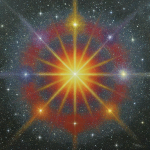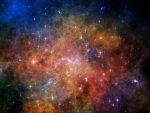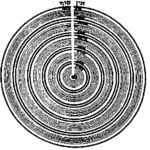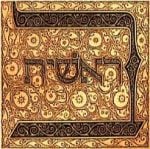
Five-Hundred-Year-Journey
Alexander Poltorak Abstract This essay addresses the anigmatic statement of the Jewish Sages, stating that G-d created this world with the letter Heh and the

Alexander Poltorak Abstract This essay addresses the anigmatic statement of the Jewish Sages, stating that G-d created this world with the letter Heh and the
By Alexander Poltorak Introduction The relationship between the laws of physics and the conditions necessary for life is among the most profound mysteries in both

Introduction In this essay, I intend to draw a parallel between the singularity in space-time, such as the putative point of origin of the universe

Now the earth was unformed and void. Genesis 1:2 We have a big problem in cosmology: the problem of the initial conditions of the universe at

A light shalt thou make to the ark…with lower, second, and third stories shalt thou make it. (Genesis 6:16) We mentioned in the previous posts

Introduction “In the beginning G‑d created the heavens and the earth.” (Genesis 1:1) “In the beginning G‑d created the heavens and the earth,” the Torah

As we discussed in the previous post “Singularity and Paradise,” Paradise offers a beautiful metaphor for modern cosmology wherein Eden is the initial singularity preceding

These are the chronicles of the heaven and of the earth when they were created, in the day that the Eternal G‑d made earth and

In a Kabbalistic meditation on lighting Chanukah Menorah, the Arizal links the menorah lights with a supernal river (see Candle on the River). The Arizal’s

בְּרֵאשִׁית בָּרָא Genesis 1:1 The Torah starts with two words—Bereshit bara—“In the beginning, G‑d created…” (or, as Rashi translates it, “At the beginning of creation
Gravitational waves discovered last year and announced last week are converted into sound waves giving the astronomers the ear into the cosmos. Characteristic sounds of
A hole in Kabbalah is called “rah” (evil). The reason for that is, as content is lost due to a leakage through the hole, forces of

There is a dispute in the Talmud as to when the world was created. According to Rabbi Eliezer, the world was created in the month

Dedicated to the memory of Professor Yaakob David Bekenstein The Torah opens with the word “Bereshit” – in the Beginning – whose first letter, Bet,
This Rosh HaShanah I had the strangest dream. I dreamed that I was giving a lecture in cosmology at a university when I suddenly realized
B’reshit bara Elokim et hashamaim v’et haaretz… In the beginning, G‑d created heaven and earth… Alternative translation: With two beginnings G‑d created heaven and earth…
On the Age of the Universe in the Many-Worlds Interpretation of Quantum Mechanics[*] Alexander Poltorak Abstract The present paper addresses the apparent discrepancy
Presented at the International Torah and Science Conference in Miami International University on December 18, 2005 Alexander Poltorak Introduction. This is the third in
Towards Reconciliation of Biblical and Cosmological Ages of the Universe[1] Alexander Poltorak Abstract Two opposite views of the age of the universe are considered.